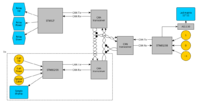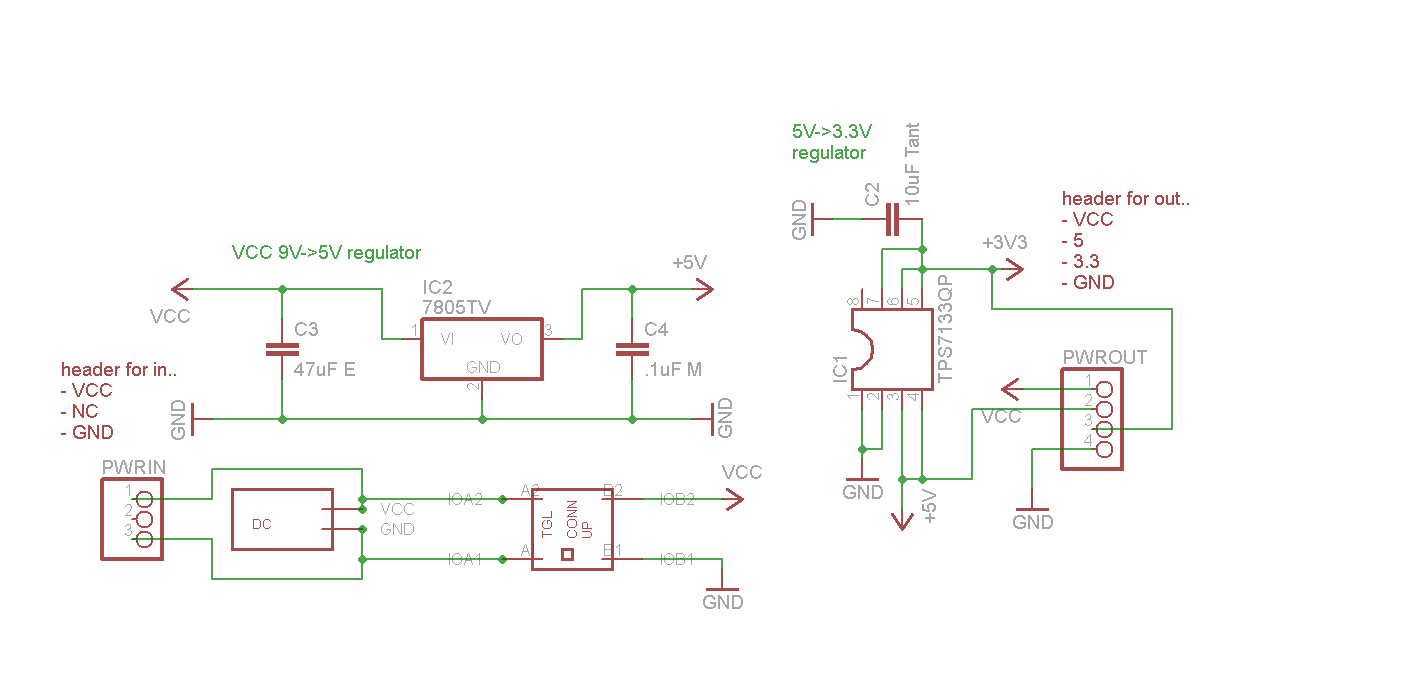Think I sorted out my power supply ..
I've been planning for awhile to feed the 5V rails from a 7805.. good, reliable solid technology, and cheap as dirt; a lot of the newer LDO regulators are mosfet based and sdeem to die if you look at them funny.. ie: the beautiful little TI TPS7133QP PDIP for instance, is a pretty ncie little chip.. but it caps at 10V; you pass 10V and poof, it goes hot and shorts internally. A 7805 takes anything based about 8V and gives oyu 5.. the more you put in, the hotter it gets until melt down, but it delivers 5 till then; it can take a beating.. 20V or something, and a big ass heatsink,m good to go. (Yes a switching regulator doesn't make heat, but I'm a touch worried they ripple a bit.. add some caps, probably fine; maybe a coil, a friend suggests.. ) .. anywaym, 7805 is tough, I like it.
(I should concern myself with component size .. go surface mount and small size items, but I'm stll trying to stick with DIP and SOIC where possible etc, keep things easy to work with; next project I'll shrink more, but I want zikzak nice and easy to work with, easily hacked and modded and repaired)
My PSU seems to send 10.1V for a brief instant on powerup, and that kills the TPS7133 .. damnit!

So I've been looking at options to handle that; I'm sort of assuming a 9V power brick is a common zikzak power source, and assuming it'll have a similar risk of spike on startup; so I've been thinking of tossing in a 9V zener (say) up front to trim off some of that potential excess voltage or other tricks, as I kept thinking I was feeding that raw power into the 7805 to get 5V, and also into 7133QP or L78L33 to get the 3.3V out.
(Problem with L78L33 is 100mA limit current .. and the STM32F4 eats up to 93mA at full consumption; I'm not driving it full, and not using many GPIOs, but still.. dont' want to brownout at the wrong times, either.) So L78L33 probably out, despite my getting a 20 pack of them coming from china in a few weeks for a buck

So back to TPS7133 .... but had a brainfart _duh_ moment today; 7133 can take 2-10V and deliver 3.3out; for some reason I didn't see I could feed it low volts .. (I wonder if it upscales from 2 to 3.3? one would think from the basic datasheet..) -- anyway, so I have a solid 5V from the 7805, so I can just drive the TPS7133 from the 7805, and voila .. stable 5V rail, and fork off the side to get the 3.3V rail. Seems to run great on breadboard, with the 7805 aned caps taking that initial spike from the bench power supply no problem.
I've got DC jacks in the pipe from china (and a pile of other little bits, see the zikzak site blog podt a week back); right off though, power section is DC jack, couple LEDs, couple caps and resistors, and the TPS7133 with its two caps. Thats not a lot of stuff, but with through hole components, thats a good square inch or square 1.5" of space used up, and not even gotten anywhere. I've not worked out it, but I keep fealing like zikzak is going ot be a 6" square board to keep things airy. Elecrow 4" square boards are $15ea or $25 for 5 of them. 6"x6" works out like $70 for 5 of them.. big jump there. So I shall endeaver to maek 4"x4" board, or maybe 4"x6" or something.
Zikzak is currently planned to actually be two boards .. the base board which is RAM, cart slot for ROM, IO chip (avr probably) and the STM32F4 (or F2) for GPU, plus all the supporting stuff (on/off toggle for power, ps/2 keyb jack, etc etc) and a big pile of headers all over it, including the cpu-board header ('shield' style.) Then the cpu board which will be one of those credit card sized pcbs, including its own decoupling caps and any extra pins it may need. (ie: anything not used by zikzak can have its own headers on the cpu board, so you can jumper off to use them.)
cpu board figuring to be avr8 for simple testing of the zikzak main board, and it'll be able to run gamesd or whatyever of course; and eZ80 cpu board for awesomeness; and stm32 cpu board for supwer power.. dual 186MHz ARM chips would be monsters ..
Good times...
Just waiting for all those jacks and bits to show up so I can measure them and make the CAD bits.
jeff



